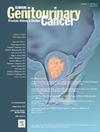Roles of Long Noncoding RNA in Prostate Cancer Pathogenesis
IF 2.3
3区 医学
Q3 ONCOLOGY
引用次数: 0
Abstract
Prostate cancer stands as the most common cancer in men, and research into its genesis and spread is still vital. The idea that the human genome's transcriptional activity is more widespread than previously thought has received empirical validation through the application of deep sequencing-based transcriptome profiling techniques. An assortment of noncoding transcripts longer than 200 nucleotides is referred to as long noncoding RNAs (lncRNAs). Transposable elements comprise a substantial portion of the human genome, with projections indicating that their prospective proportion may reach 90%. Considering they can interact directly with proteins, alter the transcriptional activity of coding genes, and perhaps encode proteins, lncRNAs possess the capability to regulate a variety of biological processes. LncRNAs have been recognized to be key factors in the development of several types of human cancers, including lung, colorectal, and breast cancers, alongside other pathological processes that have a significant impact on the diagnosis and survival of cancer individuals. Furthermore, lncRNAs' discernible expression patterns throughout various cancer scenarios significantly raise their potential as biomarkers and therapeutic targets. We conducted an extensive analysis of the prevailing academic literature on the interaction between lncRNAs and prostate cancer in order to present a solid foundation for potential future studies on the prevention and intervention of prostate cancer. The discourse additionally expands on lncRNAs' prospective applications as targets and biomarkers for medical therapies.
长非编码 RNA 在前列腺癌发病机制中的作用
前列腺癌是男性最常见的癌症,对其成因和扩散的研究仍然至关重要。通过应用基于深度测序的转录组剖析技术,人类基因组的转录活动比以前想象的更为广泛的观点得到了实证验证。长度超过 200 个核苷酸的各种非编码转录本被称为长非编码 RNA(lncRNA)。可转座元件占人类基因组的很大一部分,预计其预期比例可能达到 90%。考虑到它们可以直接与蛋白质相互作用,改变编码基因的转录活性,或许还能编码蛋白质,lncRNAs 具有调节各种生物过程的能力。LncRNAs 已被认为是包括肺癌、结直肠癌和乳腺癌在内的几种人类癌症发展过程中的关键因素,同时也是对癌症患者的诊断和生存有重大影响的其他病理过程。此外,lncRNA 在各种癌症中的表达模式也大大提高了它们作为生物标志物和治疗靶点的潜力。我们对目前有关 lncRNA 与前列腺癌之间相互作用的学术文献进行了广泛的分析,以便为今后潜在的前列腺癌预防和干预研究奠定坚实的基础。此外,论述还扩展了lncRNAs作为医学疗法靶标和生物标志物的应用前景。
本文章由计算机程序翻译,如有差异,请以英文原文为准。
求助全文
约1分钟内获得全文
求助全文
来源期刊

Clinical genitourinary cancer
医学-泌尿学与肾脏学
CiteScore
5.20
自引率
6.20%
发文量
201
审稿时长
54 days
期刊介绍:
Clinical Genitourinary Cancer is a peer-reviewed journal that publishes original articles describing various aspects of clinical and translational research in genitourinary cancers. Clinical Genitourinary Cancer is devoted to articles on detection, diagnosis, prevention, and treatment of genitourinary cancers. The main emphasis is on recent scientific developments in all areas related to genitourinary malignancies. Specific areas of interest include clinical research and mechanistic approaches; drug sensitivity and resistance; gene and antisense therapy; pathology, markers, and prognostic indicators; chemoprevention strategies; multimodality therapy; and integration of various approaches.
 求助内容:
求助内容: 应助结果提醒方式:
应助结果提醒方式:


